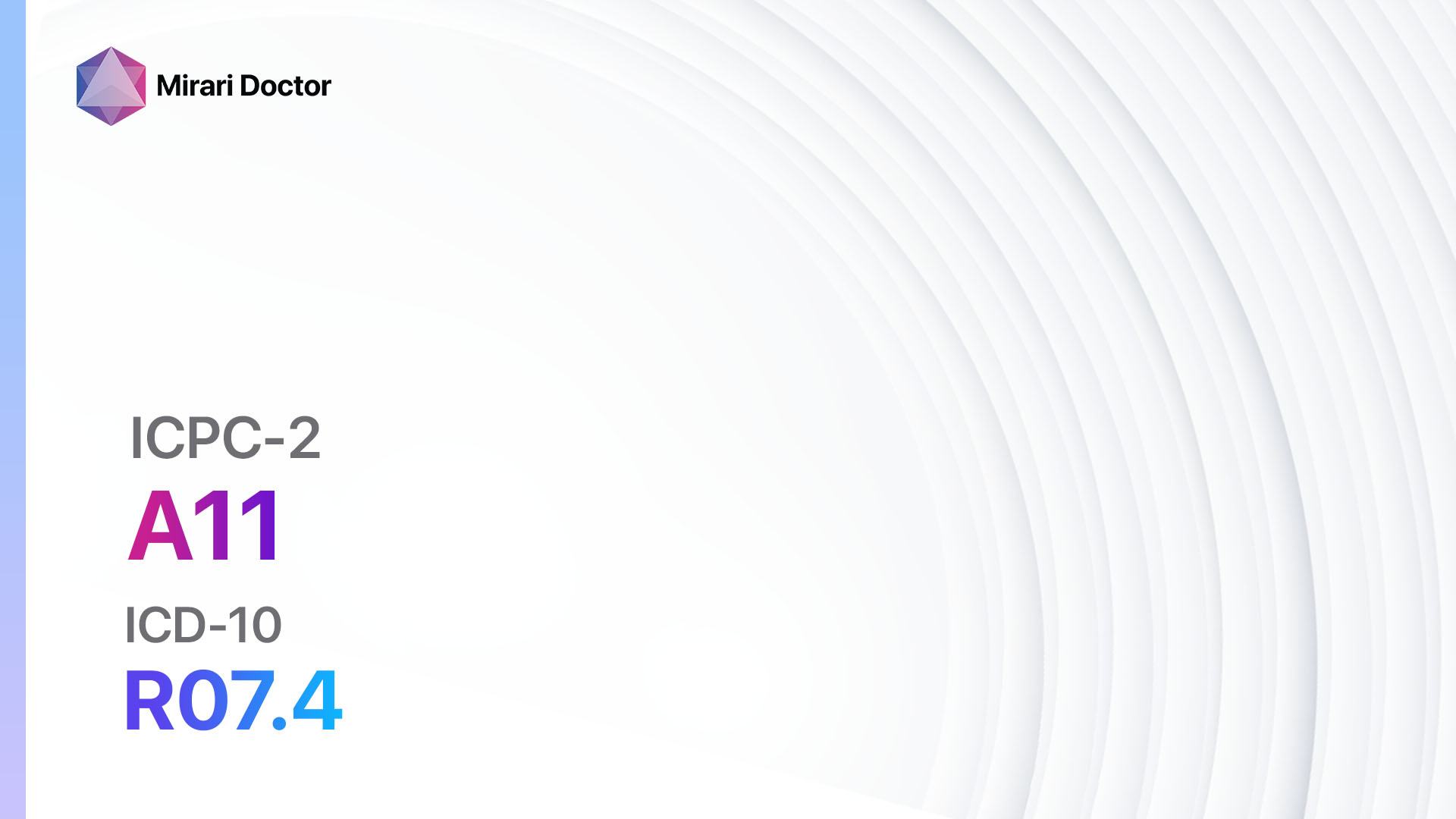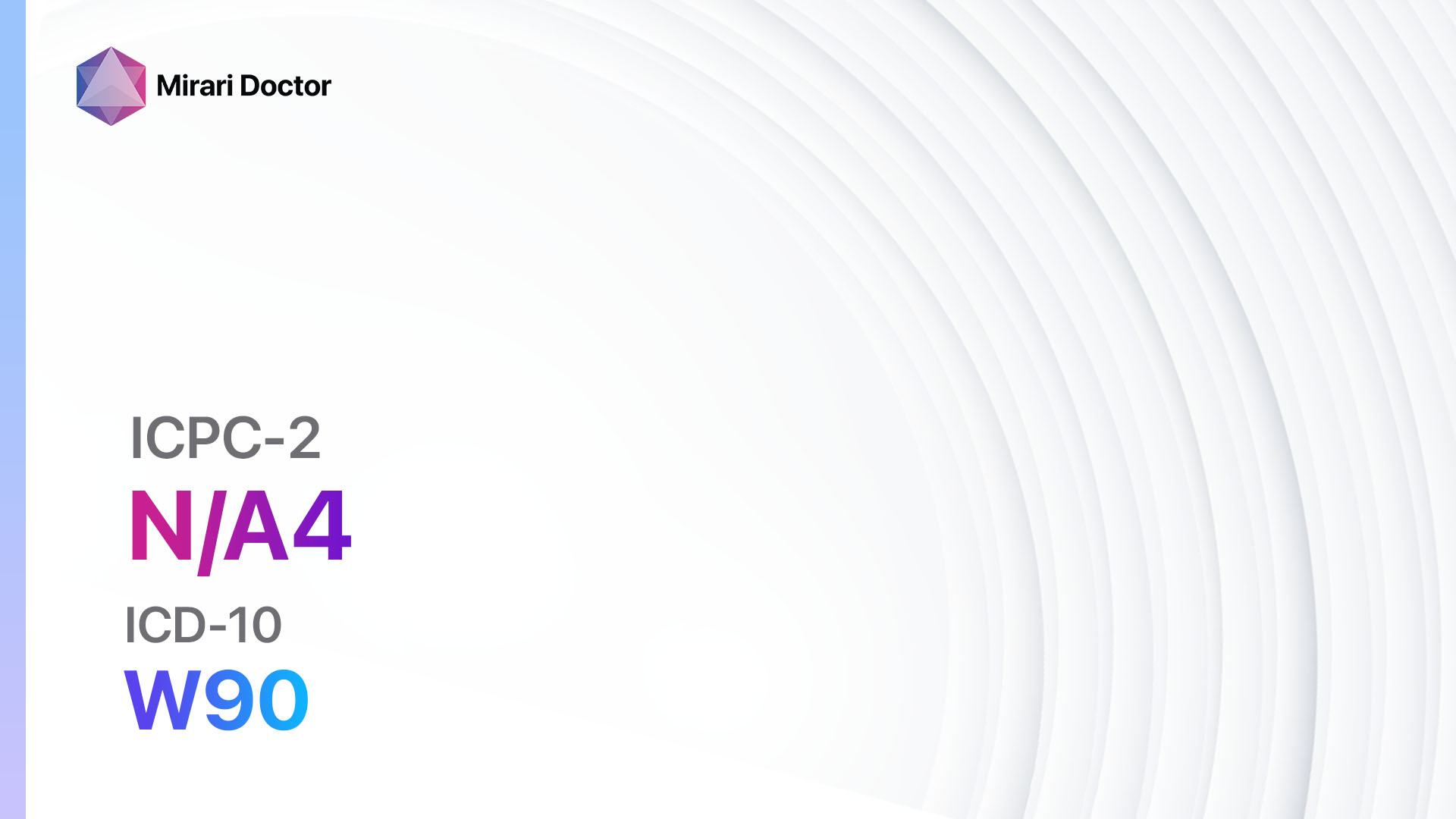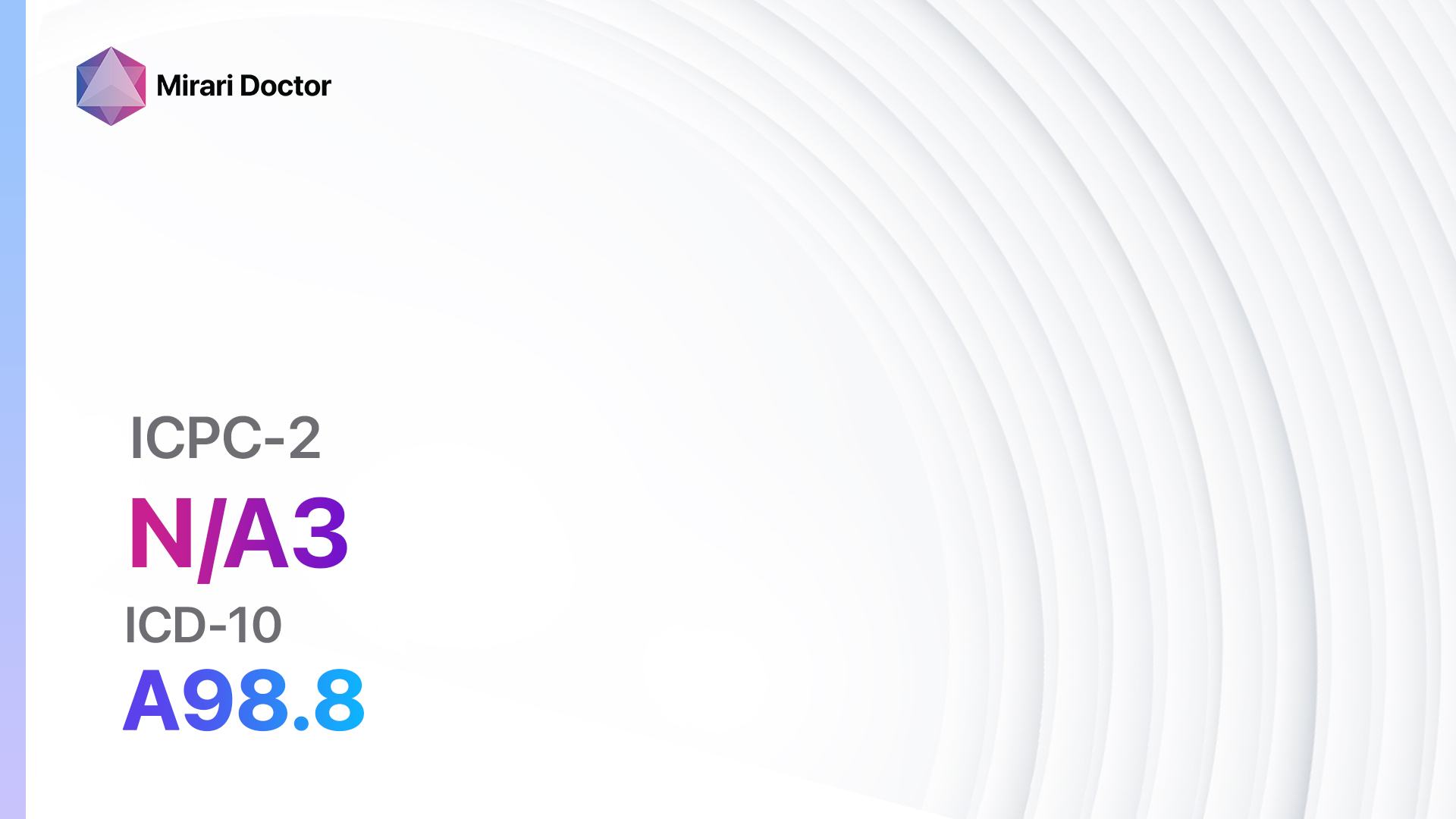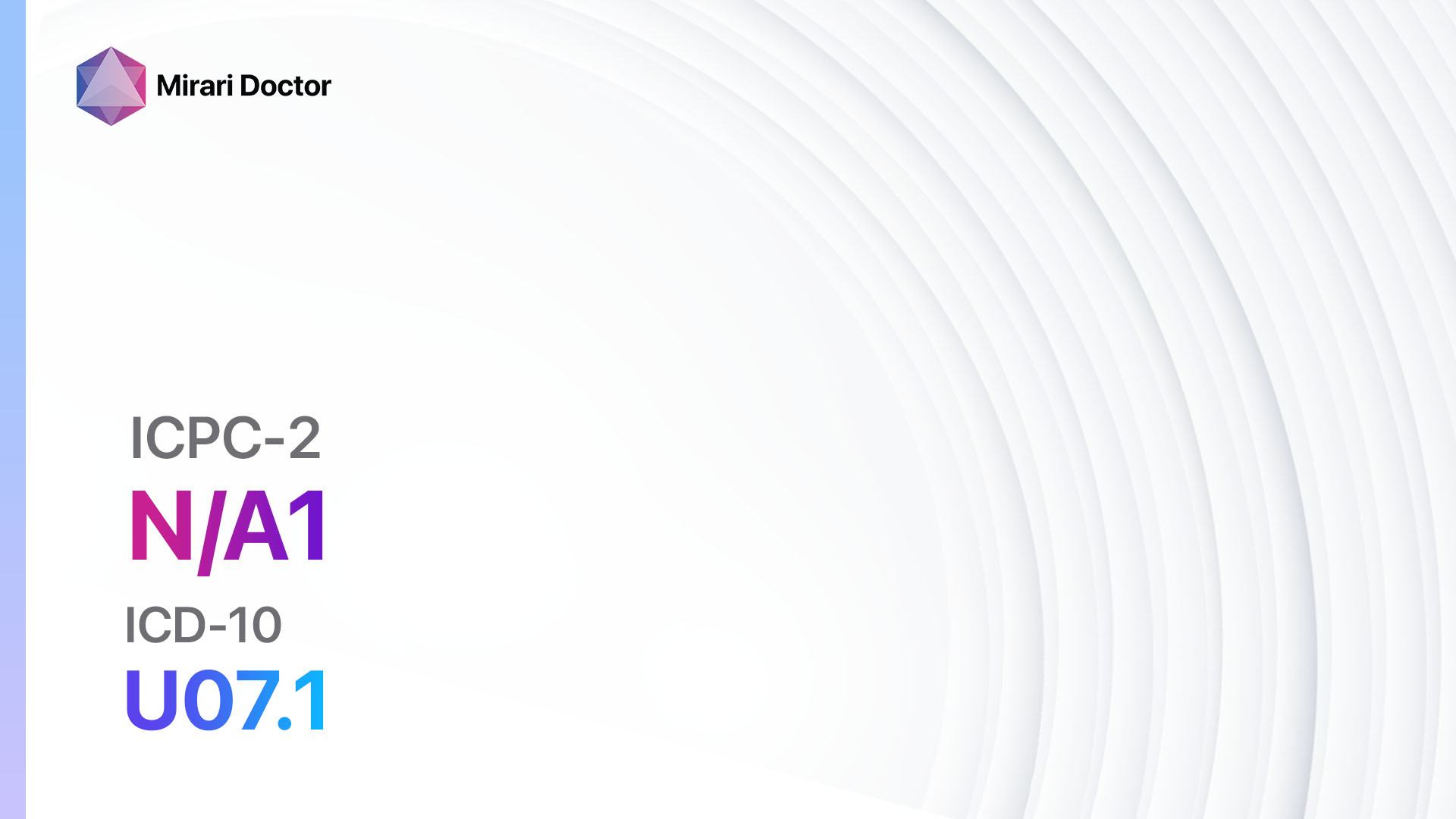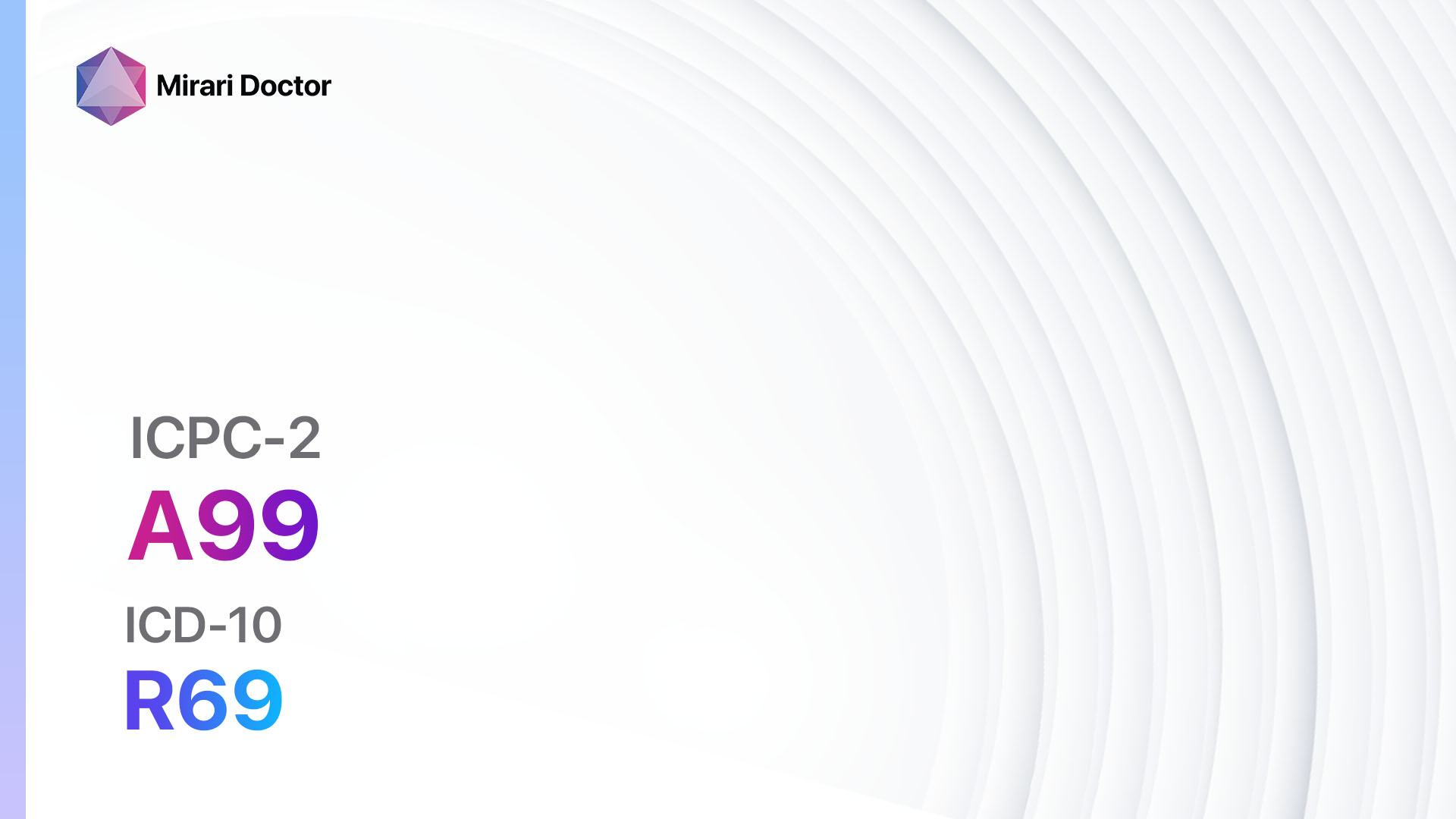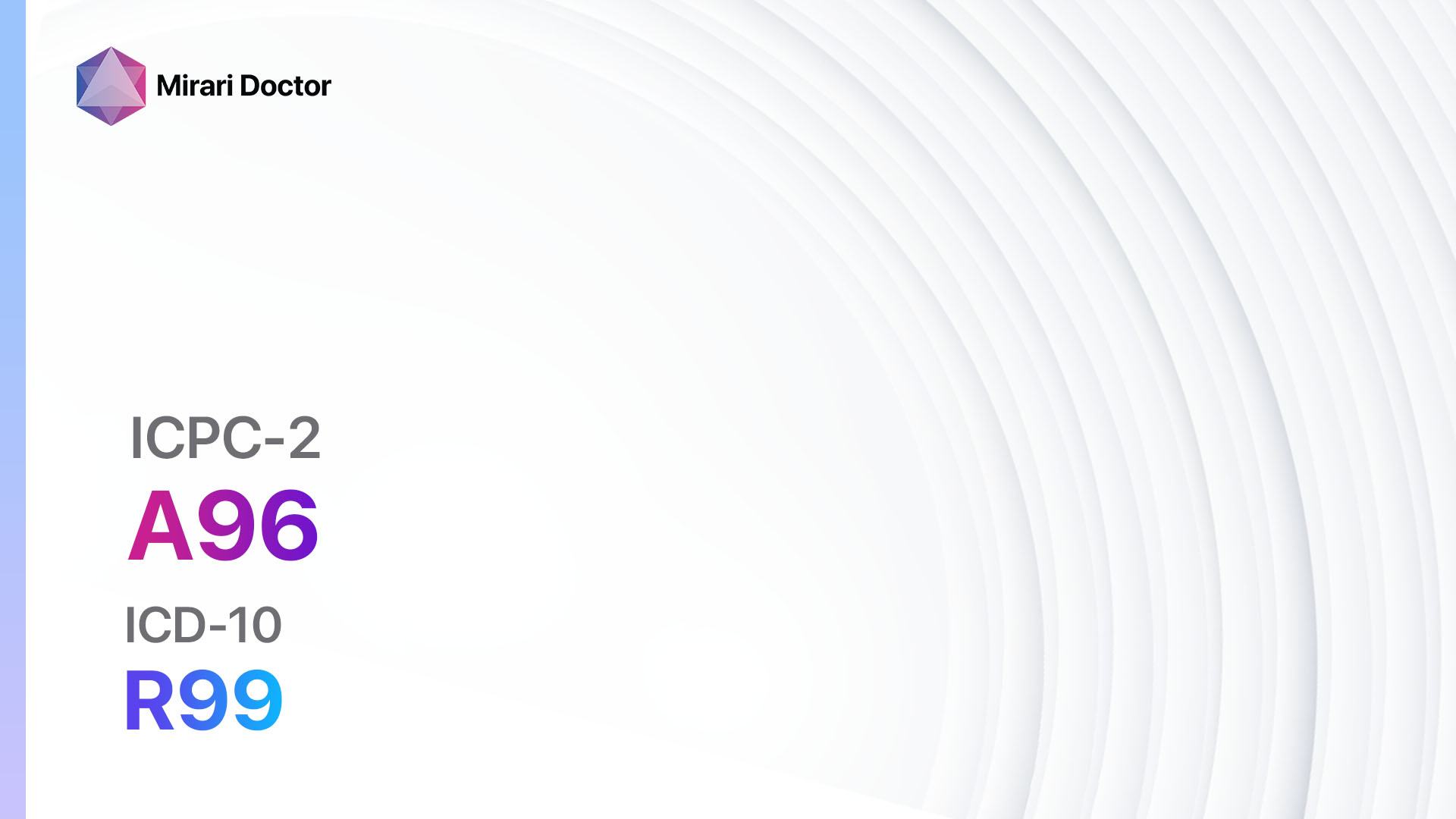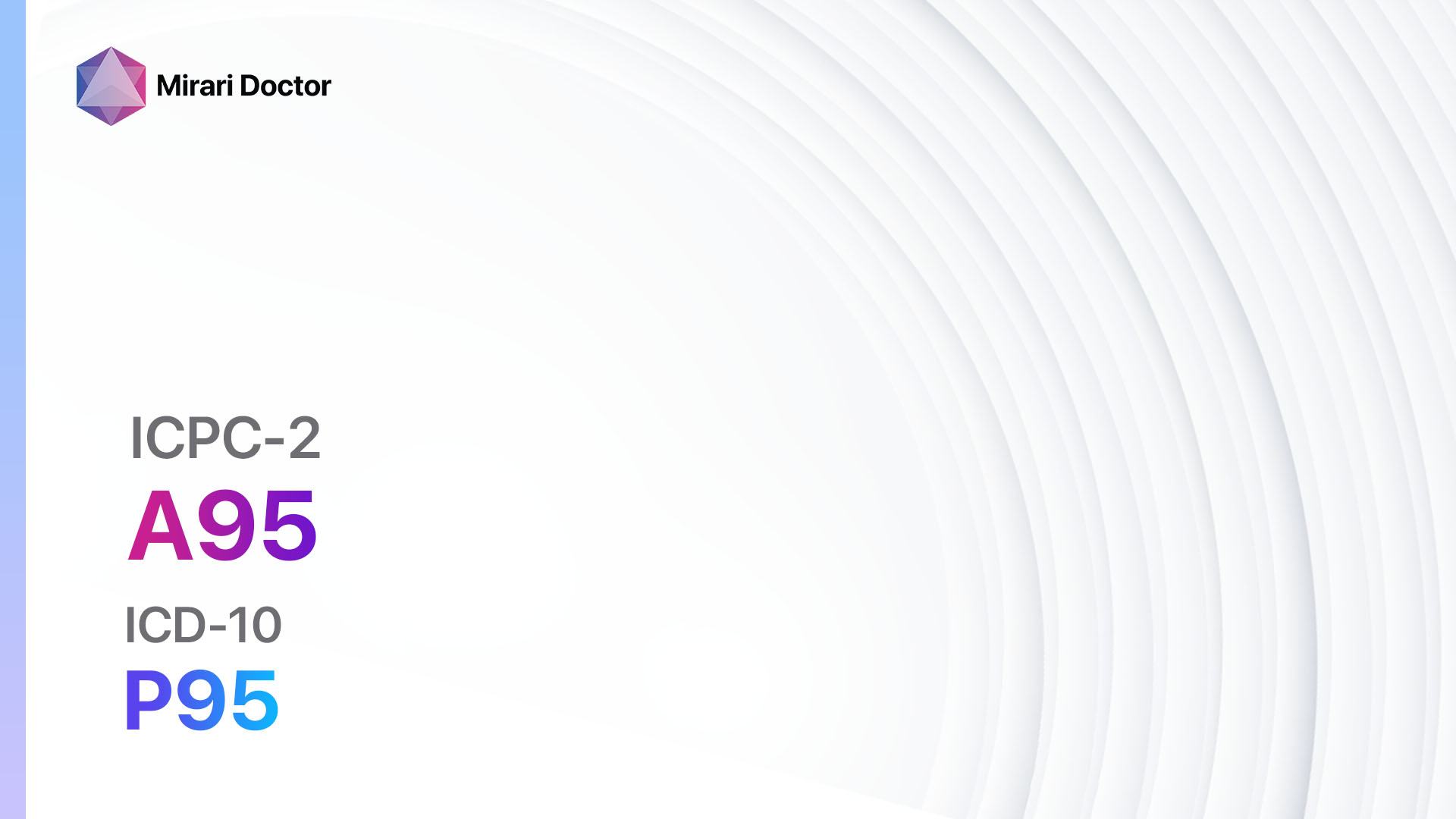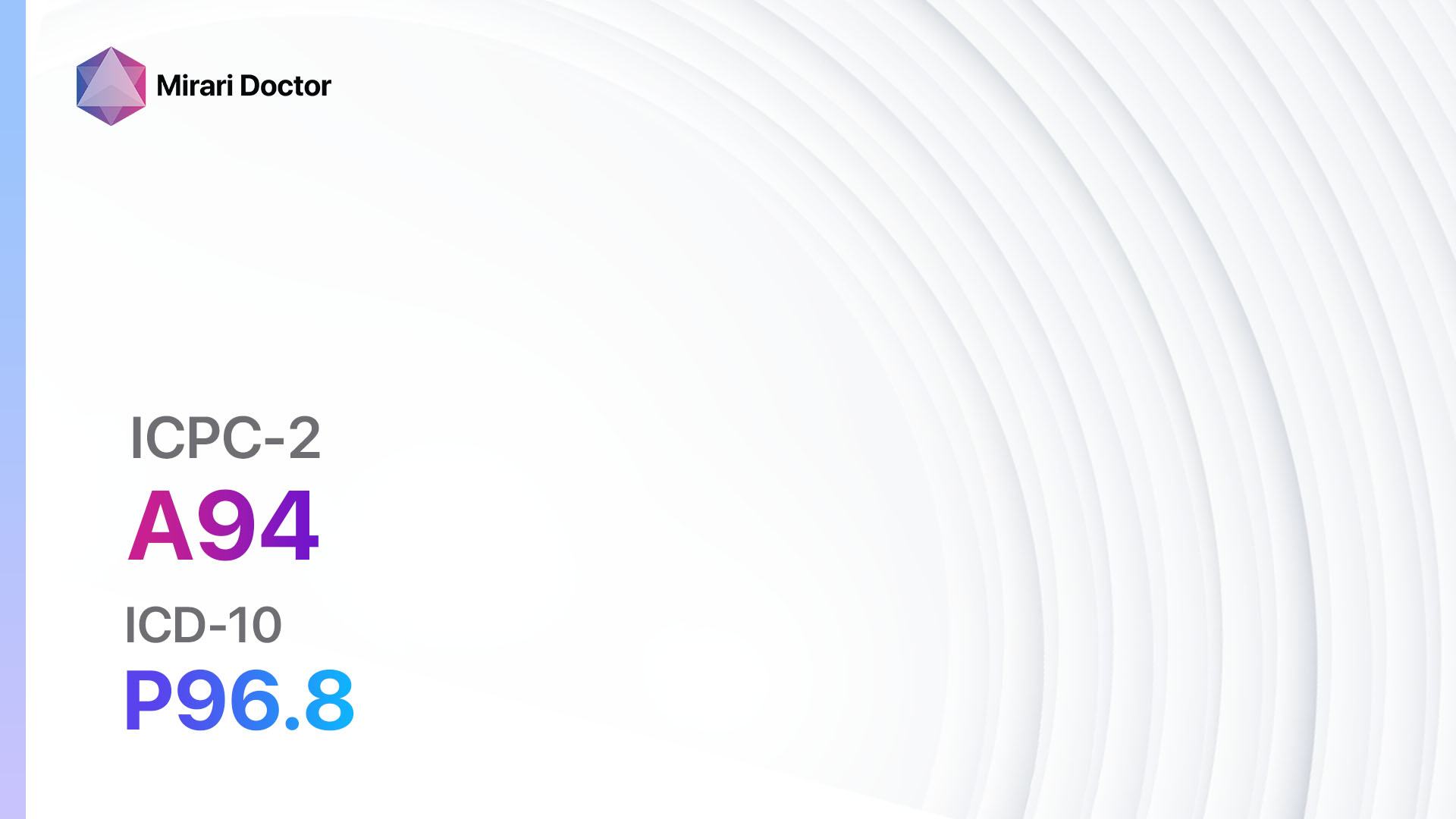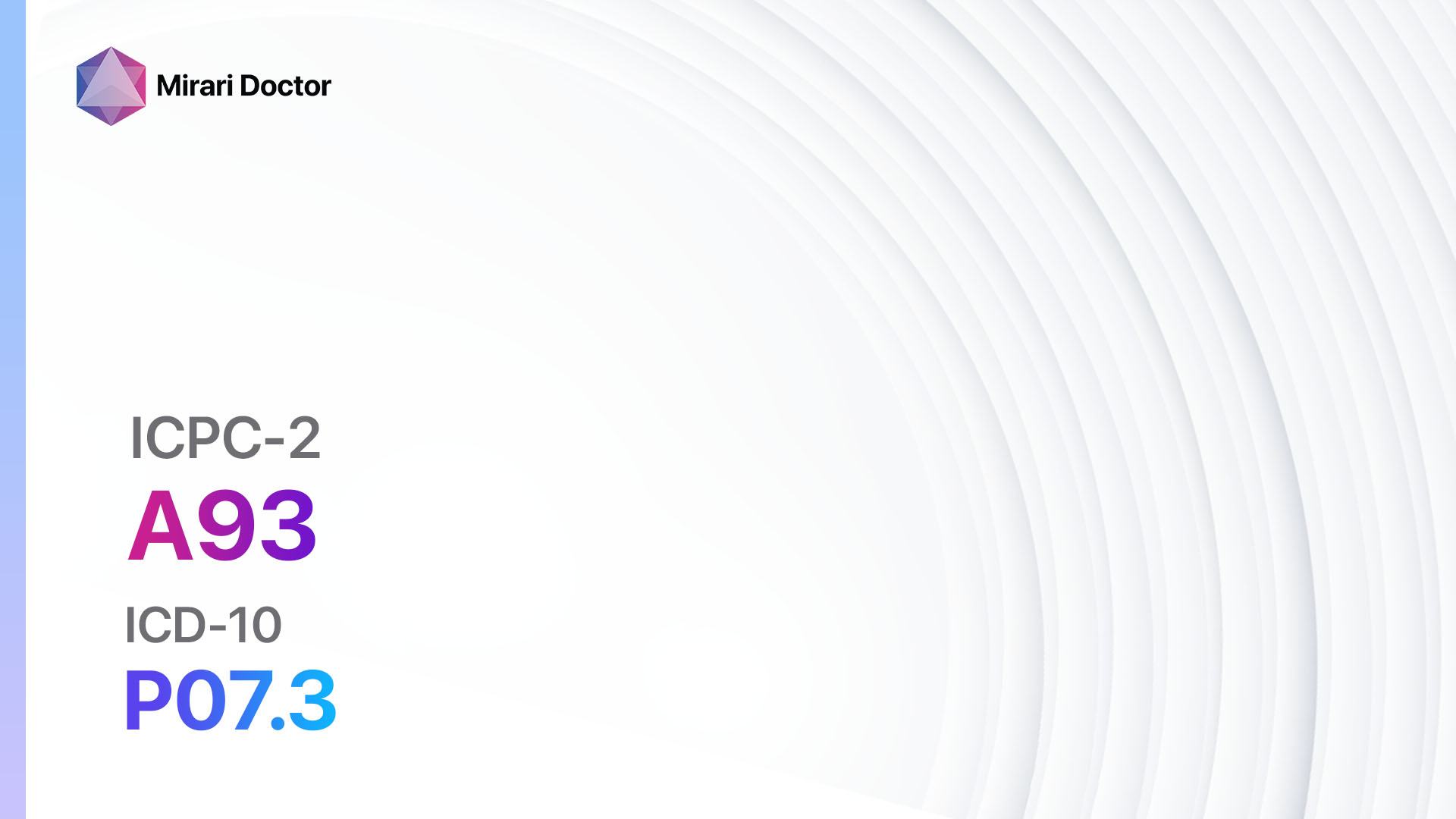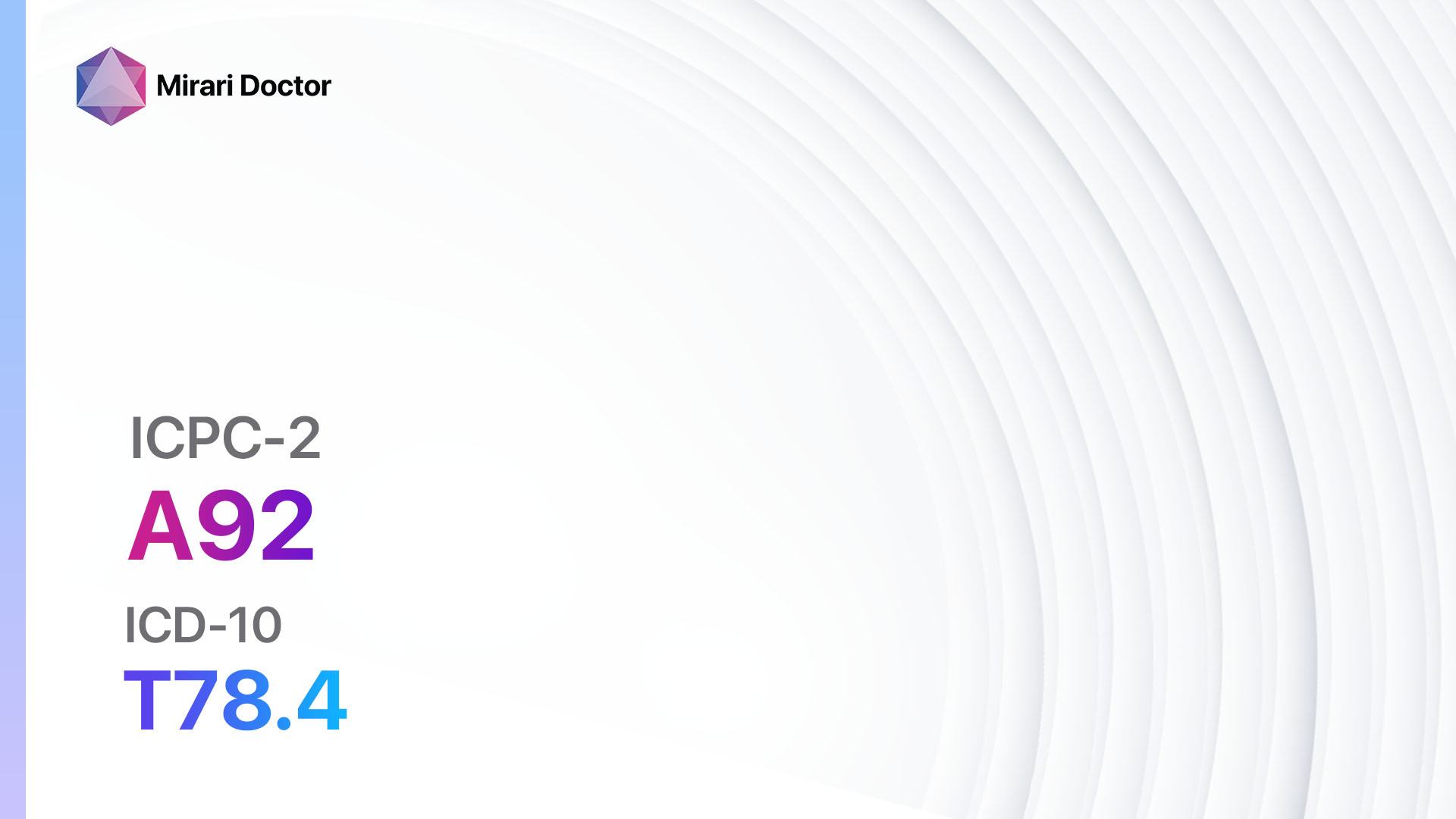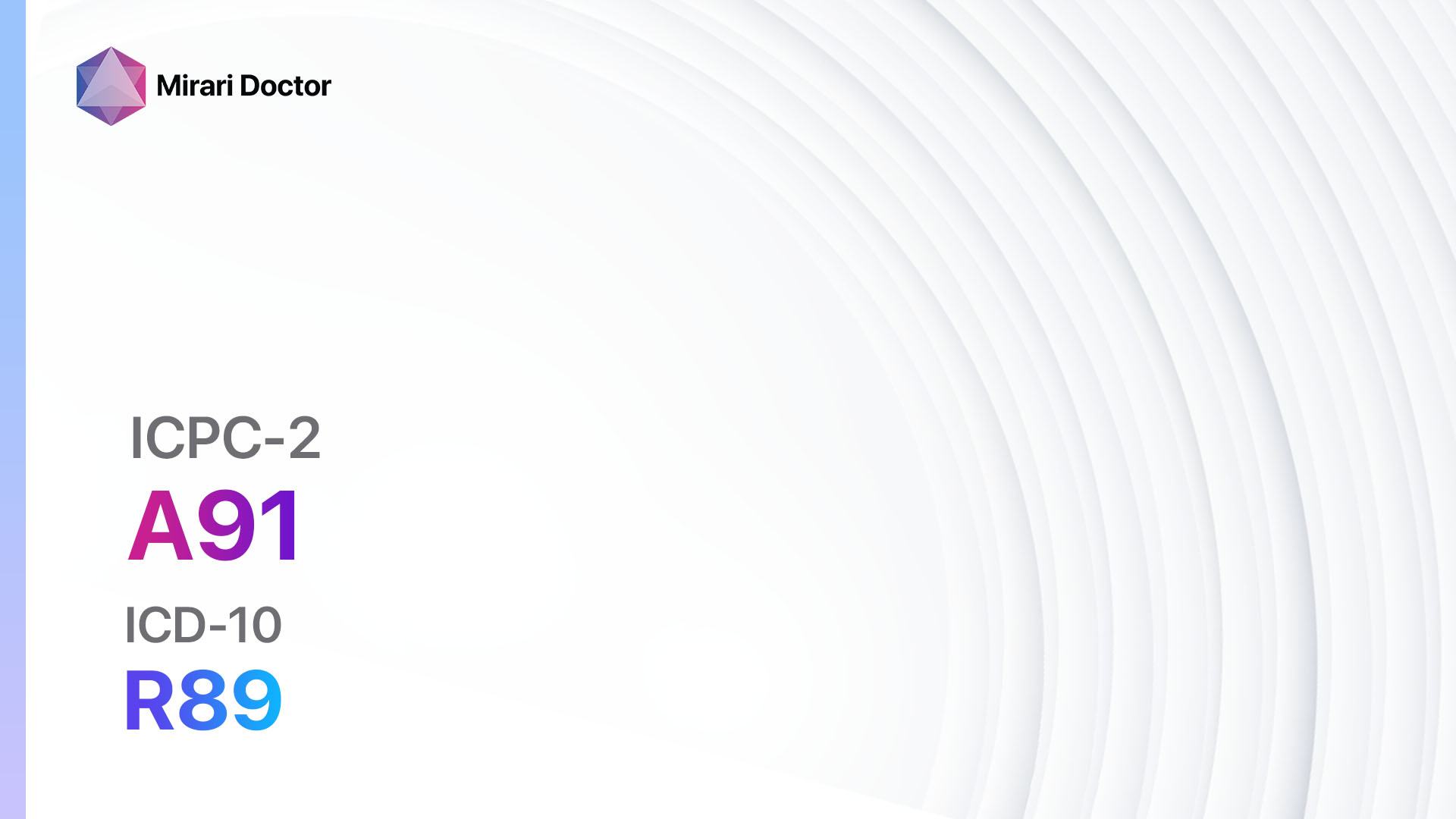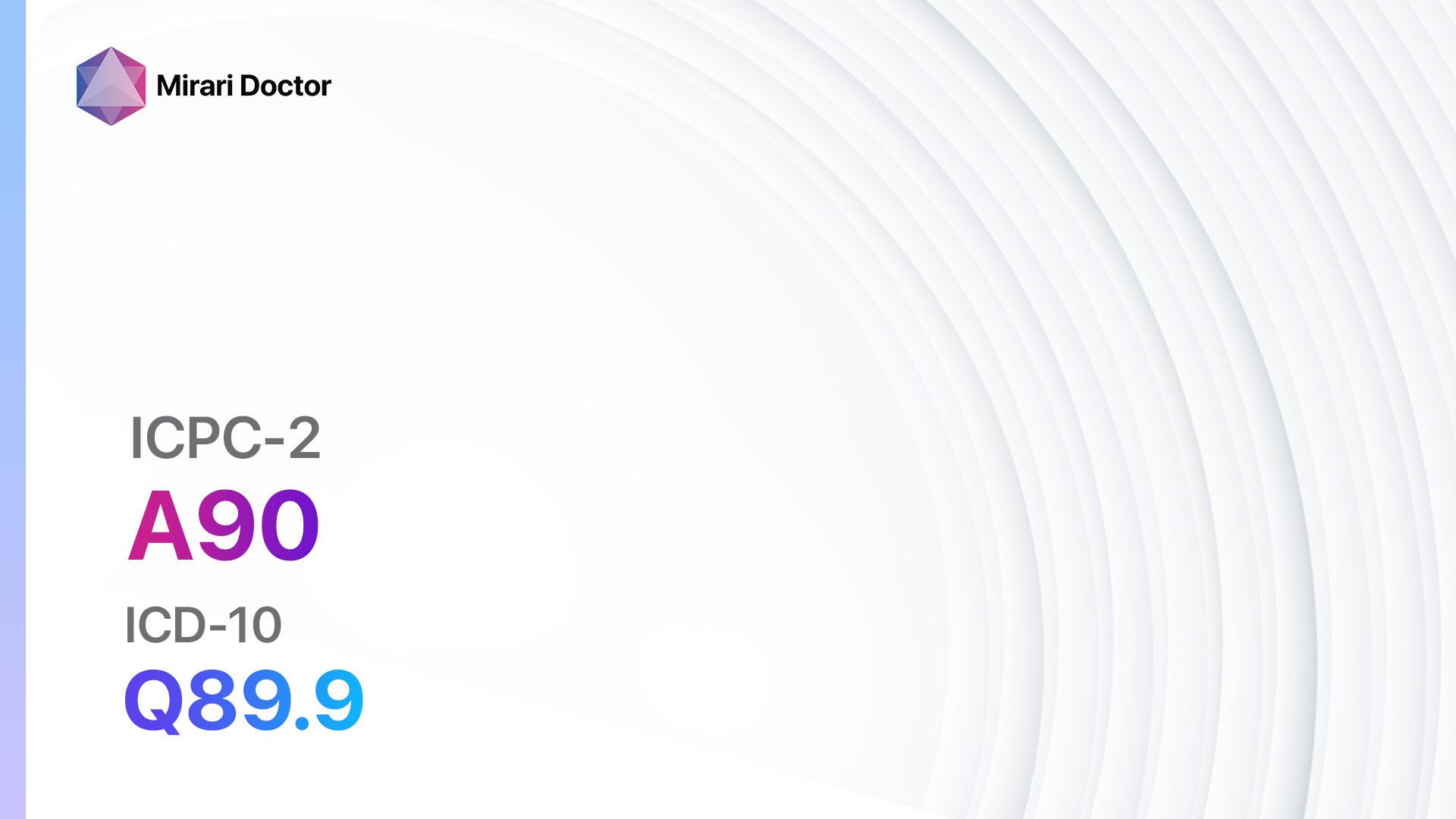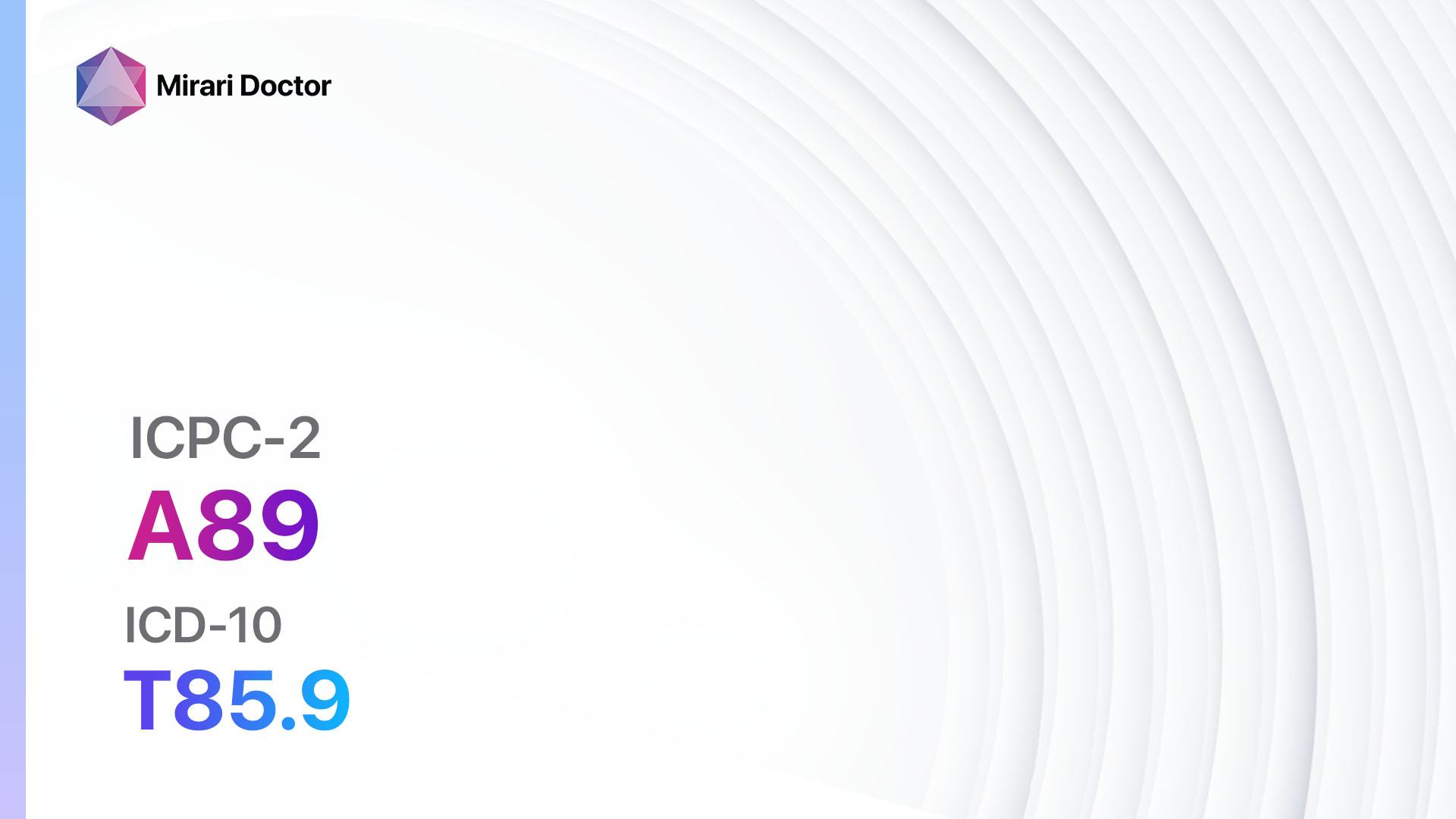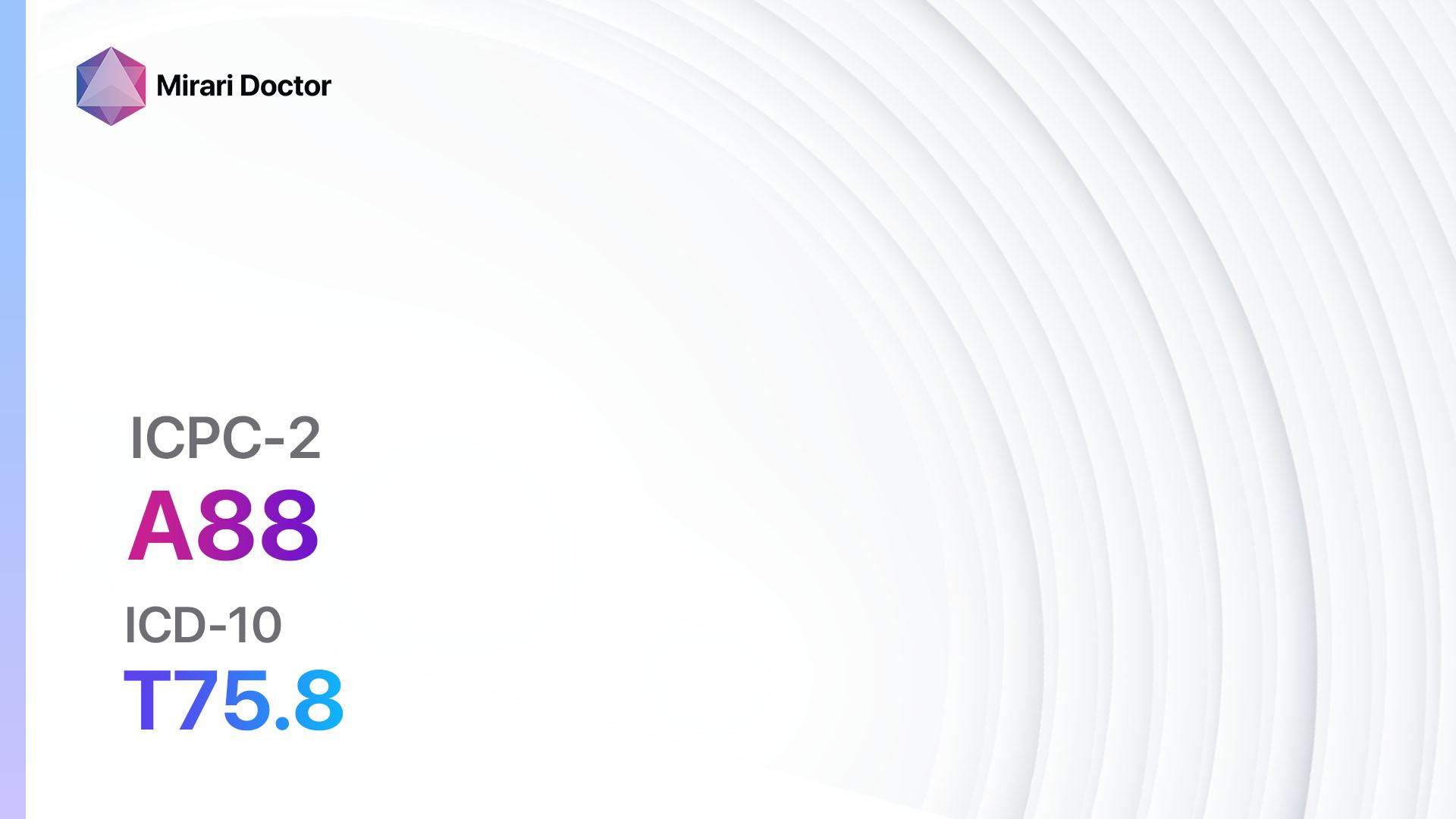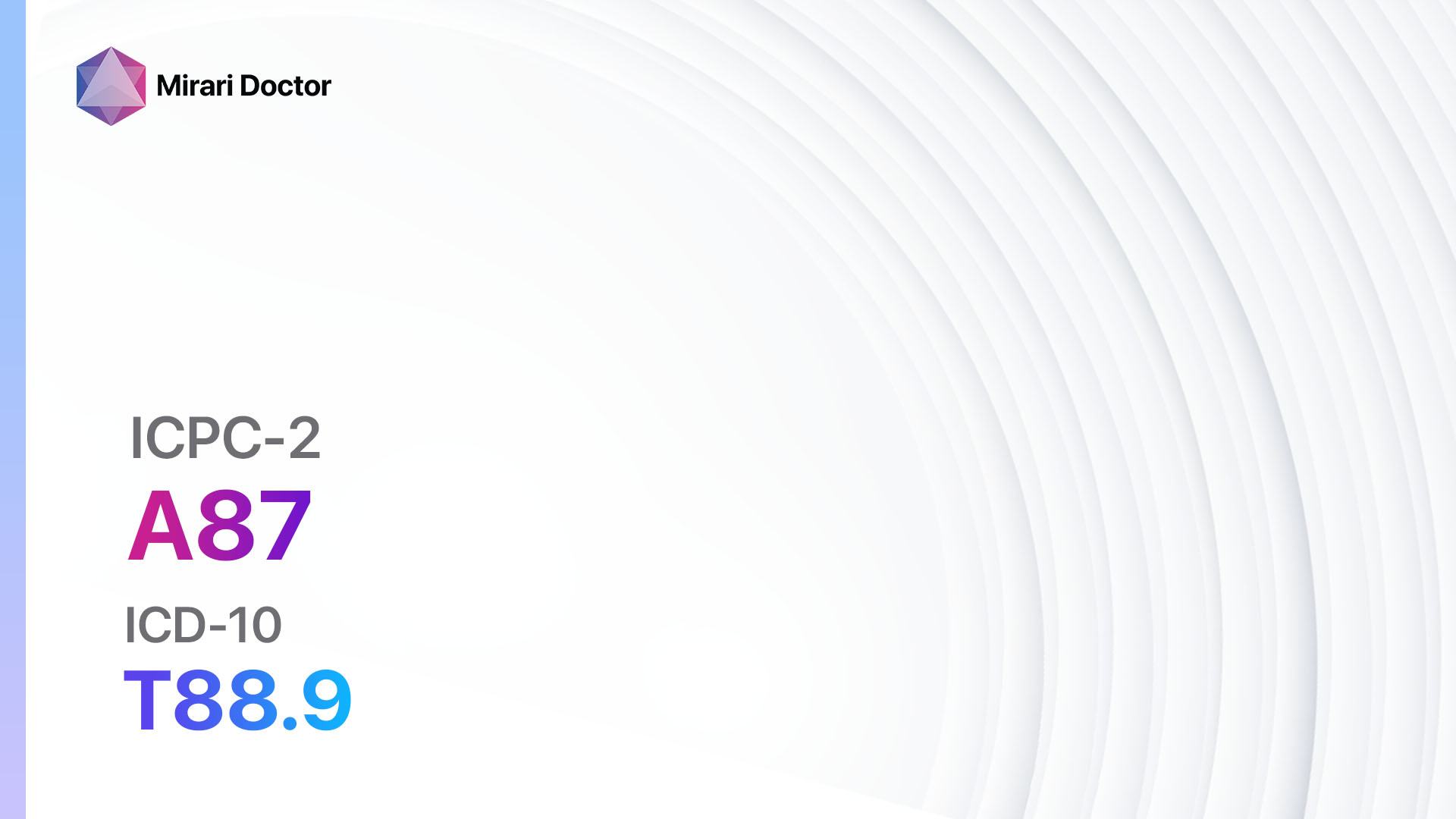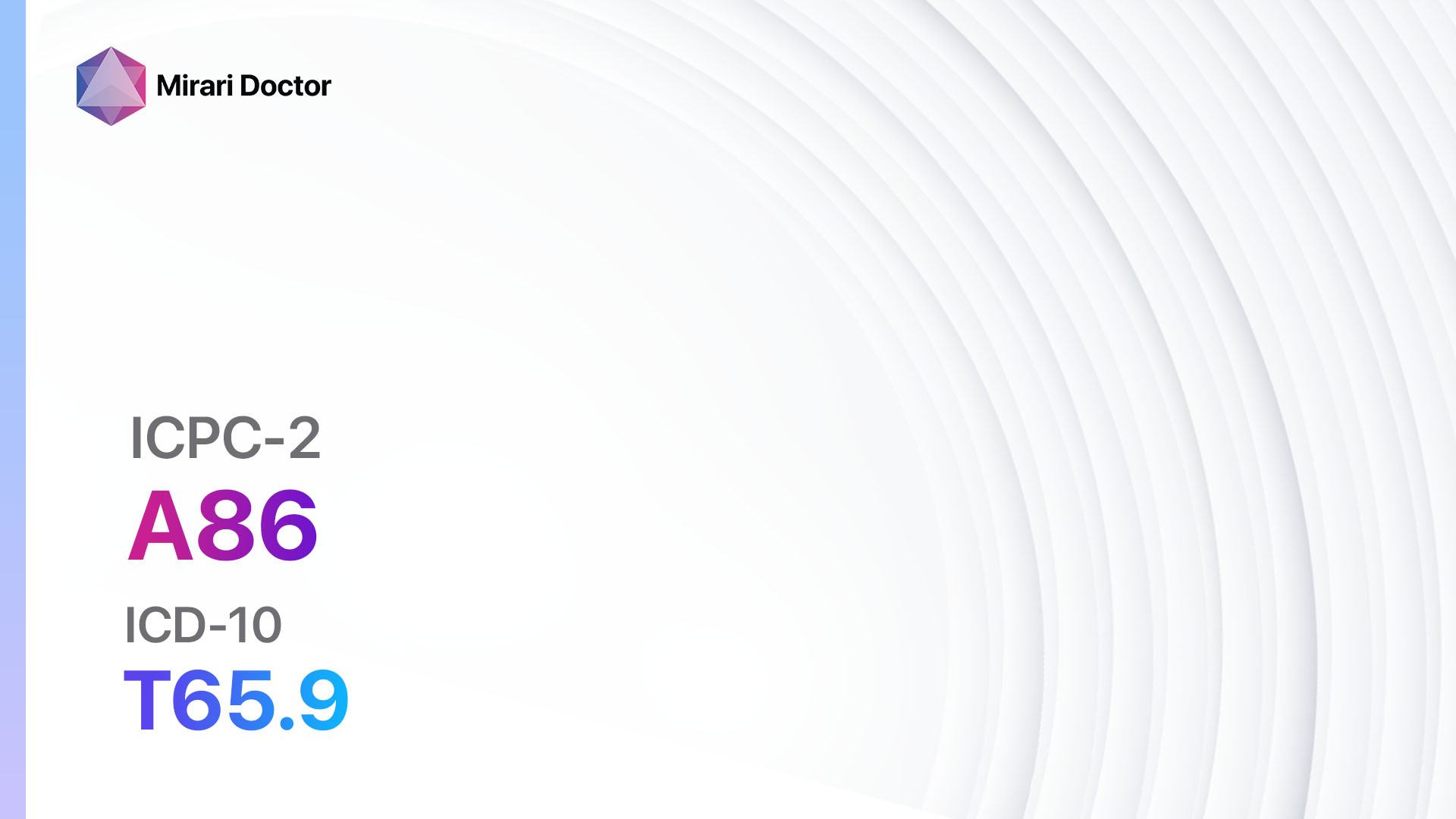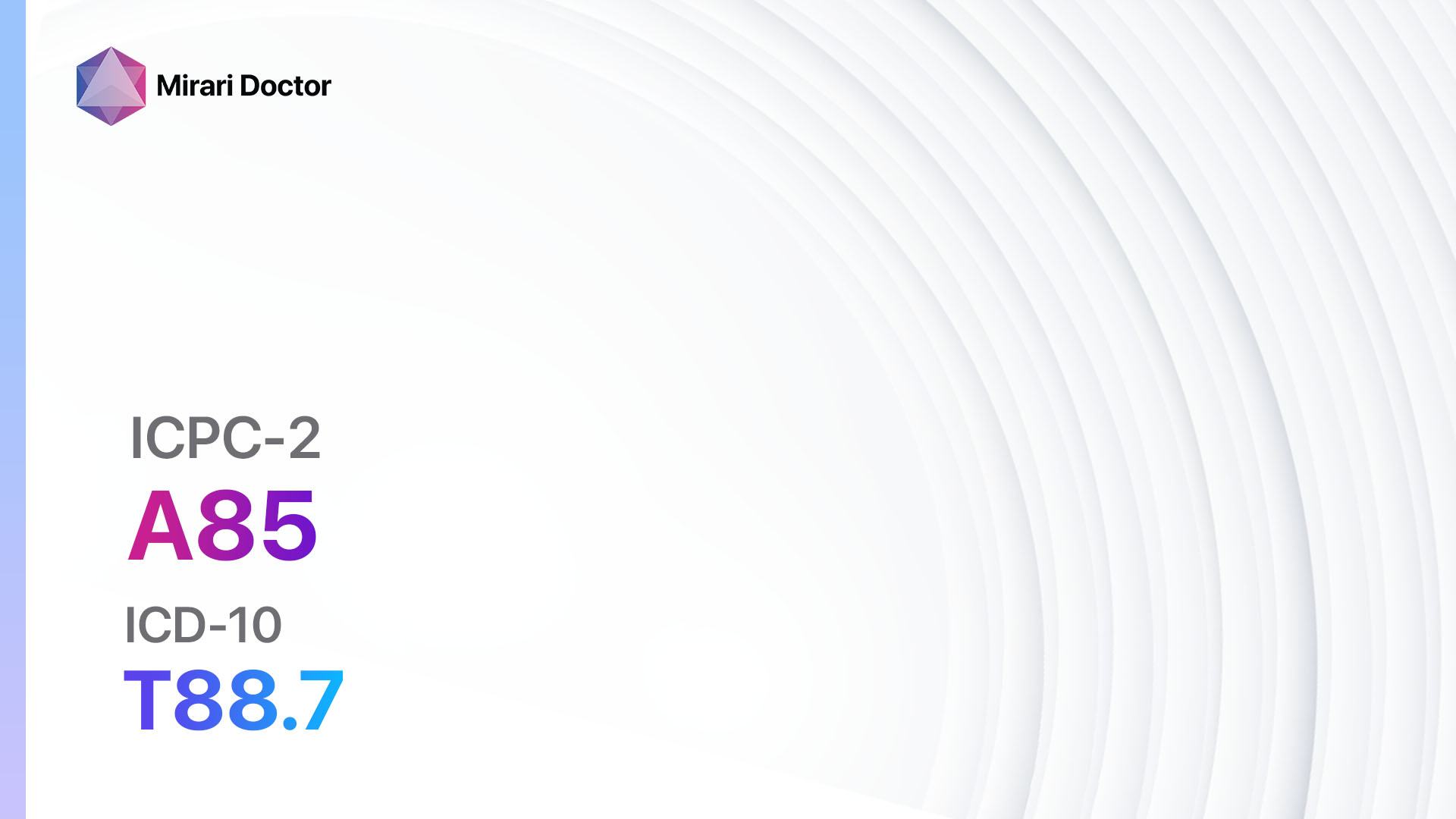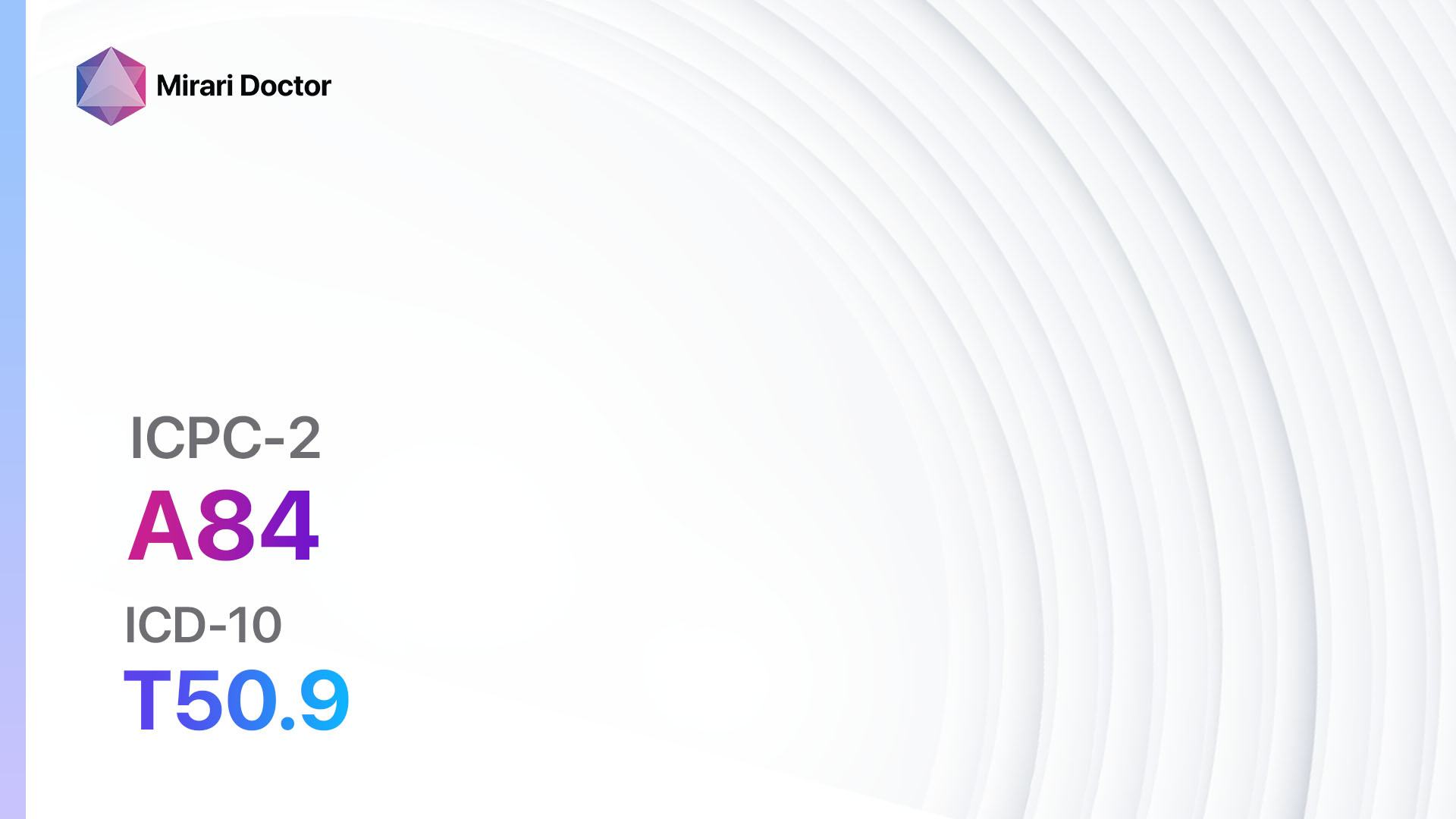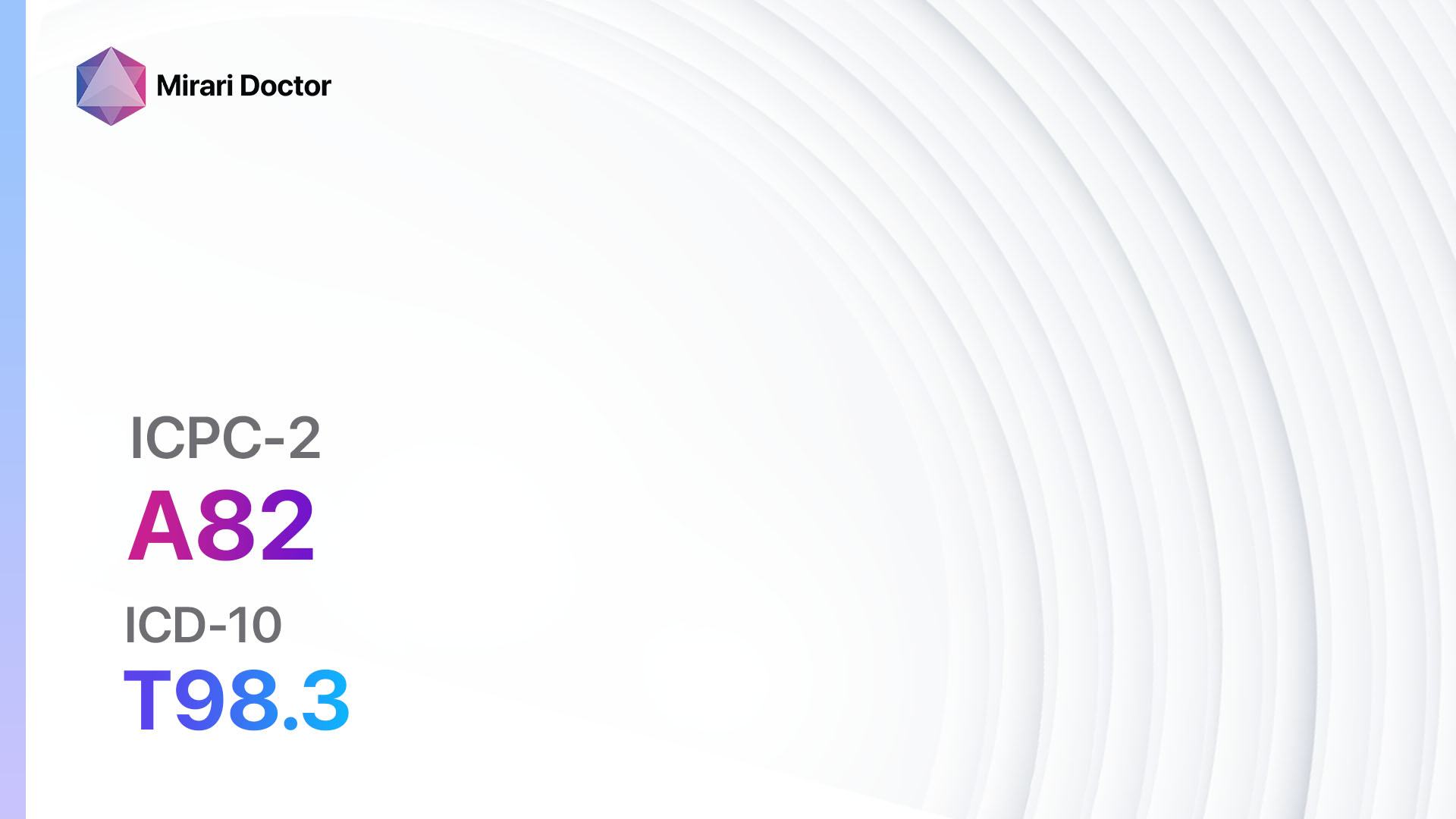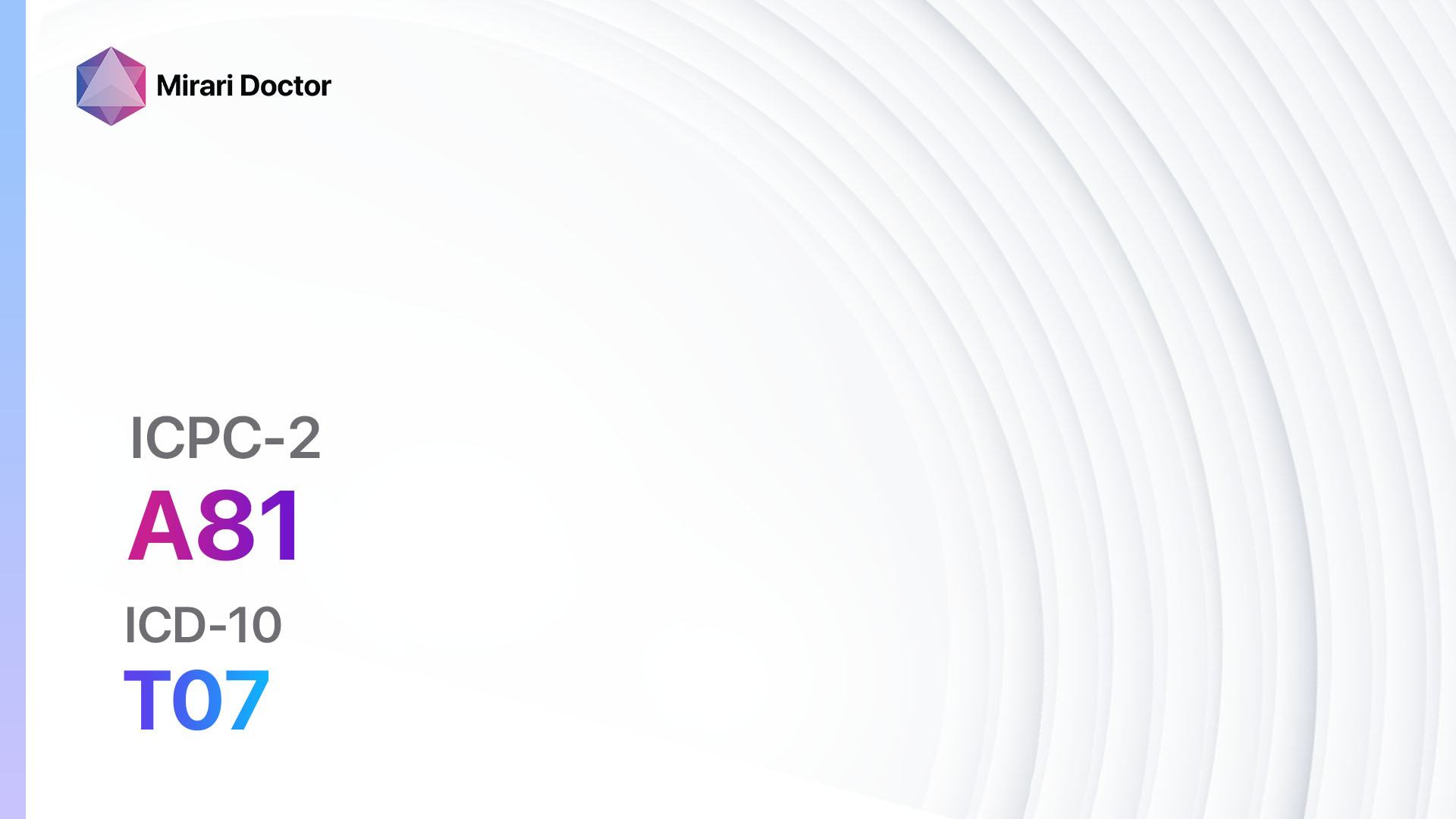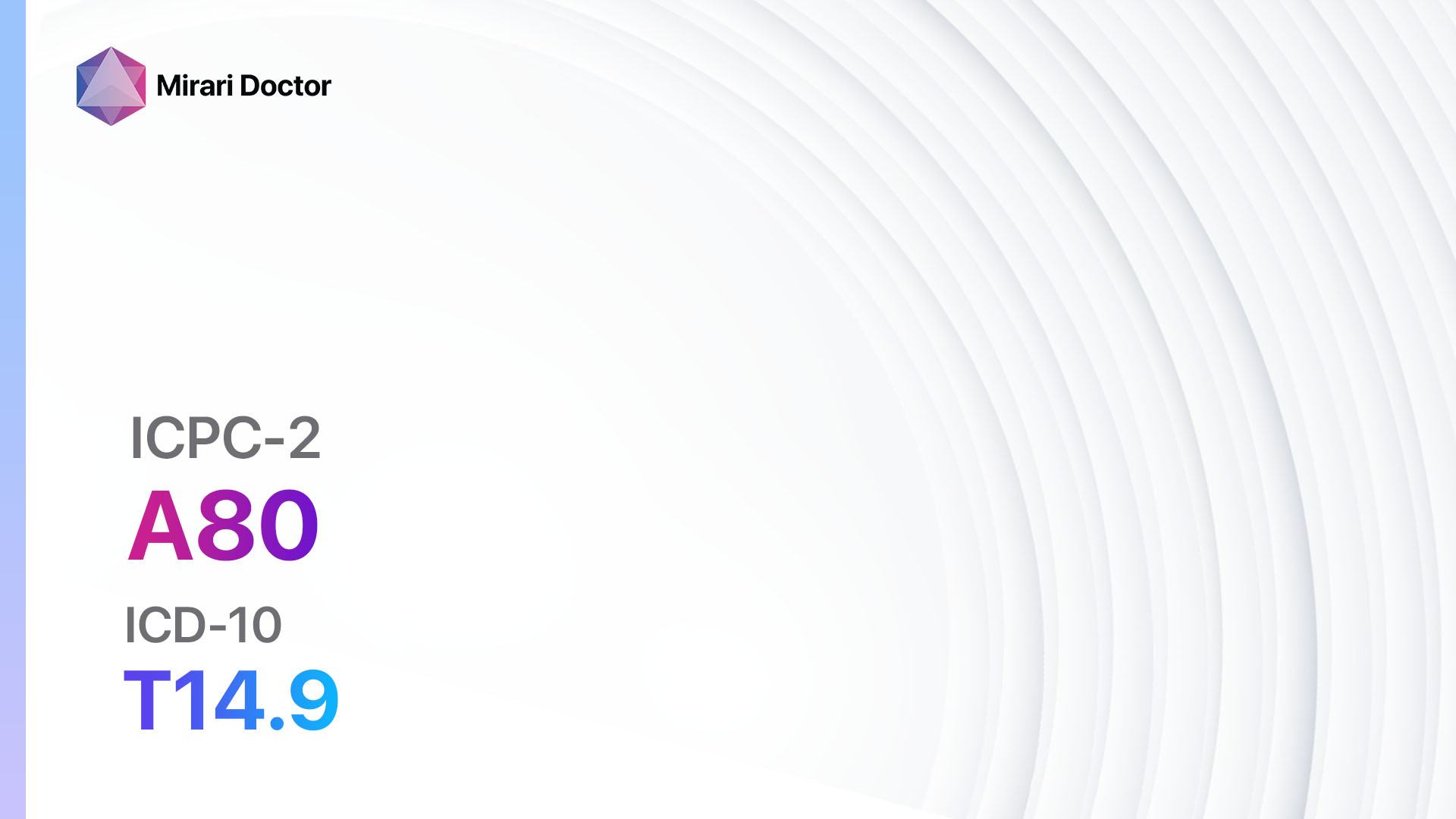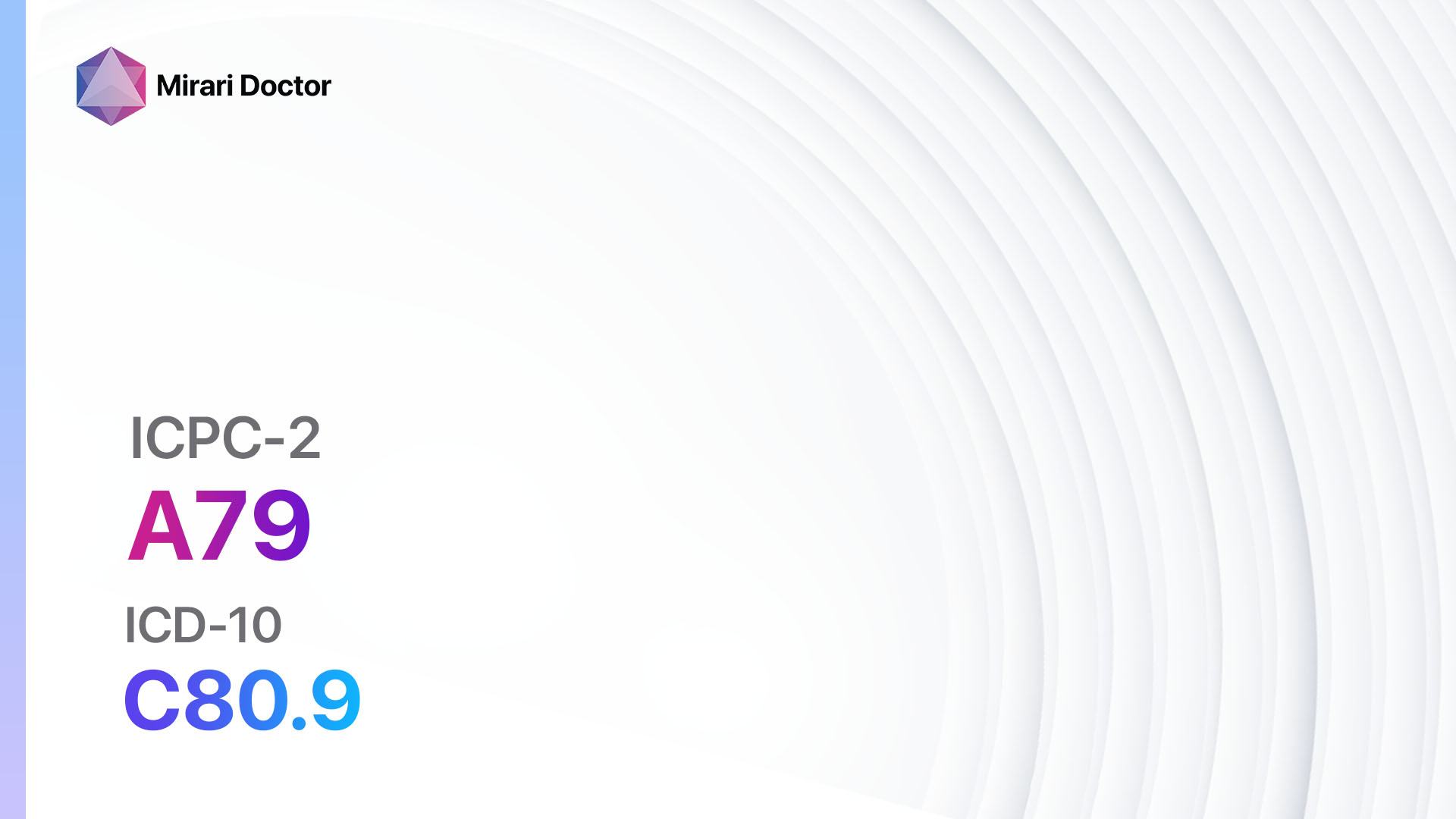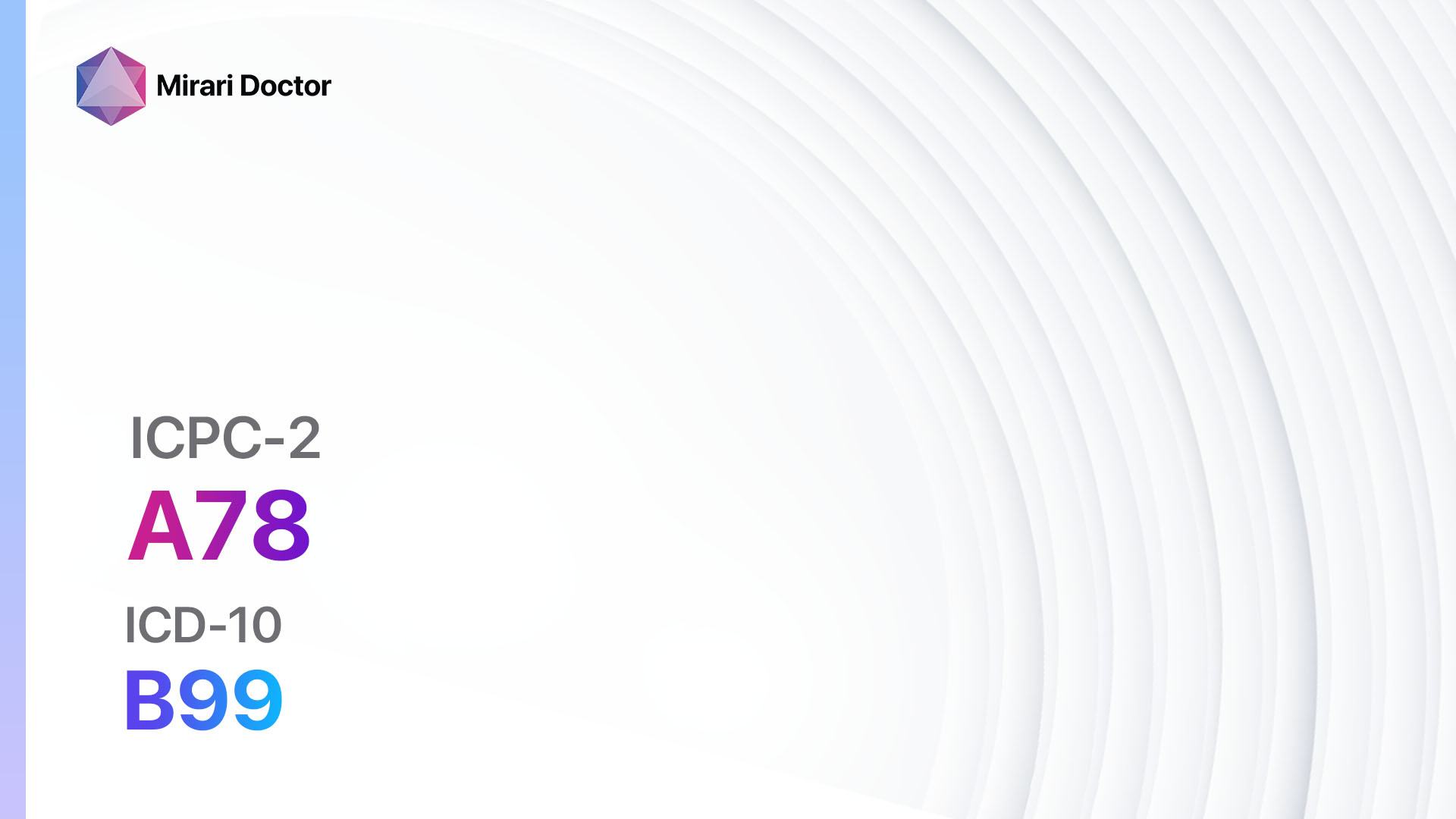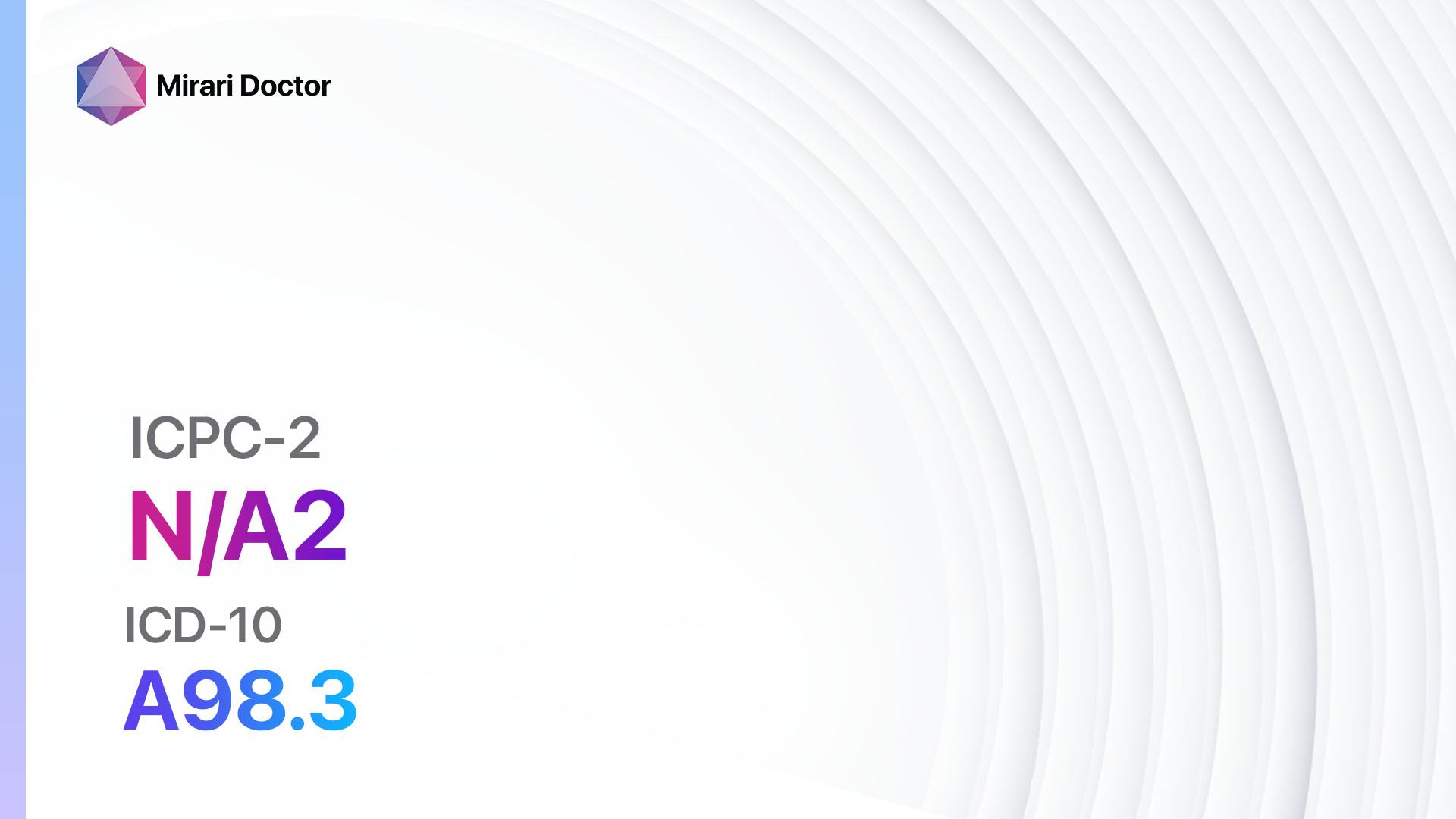
Introduction
Marburg virus disease (MVD) is a severe and often fatal illness caused by the Marburg virus. It belongs to the family Filoviridae, which also includes the Ebola virus. MVD is characterized by a sudden onset of fever, headache, muscle aches, and malaise, followed by severe hemorrhagic manifestations.[1]The aim of this guide is to provide a comprehensive overview of the symptoms, causes, diagnostic steps, possible interventions, and patient education for MVD.
Codes
Symptoms
- Fever: Patients may experience a sudden onset of high fever.
- Headache: Severe headaches are common in Marburg patients.
- Muscle aches: Patients may experience severe muscle aches and pain.
- Nausea and vomiting: Gastrointestinal symptoms, such as nausea and vomiting, are common.
- Diarrhea: Patients may experience watery diarrhea.
- Chest pain: Some patients may experience chest pain and difficulty breathing.
- Bleeding: Marburg can cause bleeding from various sites, such as the gums, nose, and gastrointestinal tract.[2]
Causes
- Marburg virus: Marburg is caused by the Marburg virus, which is transmitted to humans from fruit bats or through direct contact with the bodily fluids of infected animals or humans.[3]
Diagnostic Steps
Medical History
- Conduct a comprehensive medical history to gather relevant patient information, including recent travel history to areas with known Marburg outbreaks.
- Inquire about any potential exposure to fruit bats or contact with infected individuals or animals.
- Ask about the onset and progression of symptoms, including fever, headache, muscle aches, and bleeding.[4]
Physical Examination
- Perform a thorough physical examination, focusing on specific signs or findings indicative of Marburg.
- Look for signs of bleeding, such as petechiae (small red or purple spots on the skin), ecchymosis (bruising), or bleeding from mucous membranes.
- Assess vital signs, including temperature, heart rate, and blood pressure.[5]
Laboratory Tests
- Complete blood count (CBC): A CBC can help identify abnormalities, such as low platelet count and abnormal white blood cell count.
- Coagulation profile: Assessing coagulation parameters, such as prothrombin time (PT) and activated partial thromboplastin time (aPTT), can help evaluate the patient’s clotting function.
- Liver function tests: Liver function tests can help assess liver damage, which is common in Marburg patients.
- Kidney function tests: Kidney function tests can help evaluate renal function, as kidney damage can occur in severe cases.
- Viral antigen detection: Polymerase chain reaction (PCR) tests can be used to detect the presence of Marburg virus antigens in the blood.
- Serology: Serological tests, such as enzyme-linked immunosorbent assay (ELISA), can be used to detect antibodies against the Marburg virus.[6][7]
Diagnostic Imaging
- Chest X-ray: A chest X-ray may be performed to assess the presence of pulmonary complications, such as pneumonia or acute respiratory distress syndrome (ARDS).
- Abdominal ultrasound: An abdominal ultrasound can help evaluate the liver and spleen for signs of enlargement or damage.
- Brain imaging: In severe cases, brain imaging, such as a CT scan or MRI, may be necessary to assess for central nervous system involvement.[8]
Other Tests
- Lumbar puncture: In cases with suspected central nervous system involvement, a lumbar puncture may be performed to analyze cerebrospinal fluid for signs of viral infection.
- Tissue biopsy: In some cases, a tissue biopsy may be necessary to confirm the presence of Marburg virus in specific organs or tissues.[9]
Follow-up and Patient Education
- Provide appropriate follow-up care and monitoring for patients diagnosed with Marburg.
- Educate patients and their families about the importance of infection control measures, such as
- hand hygiene and proper disposal of contaminated materials.
- Provide information on the signs and symptoms of Marburg and when to seek medical attention.[10]
Possible Interventions
Traditional Interventions
Medications:
Top 5 drugs for Marburg virus disease:
- Fenbendazole:
- Cost: The price for veterinary use typically ranges from $5 to $30 for various formulations and quantities. Human-grade or purified formulations (if available) may differ in cost.
- Contraindications: Known hypersensitivity to fenbendazole or similar drugs. It’s not typically used in humans, so contraindications for human use aren’t well-established.
- Side Effects: In animals: diarrhea, vomiting, drooling, lethargy. Human side effects are not well-documented due to limited use.
- Severe Side Effects: Not well-established due to its primary use in animals.
- Drug Interactions: Not thoroughly documented for human use.
- Warning: Fenbendazole is primarily a veterinary drug. Any off-label use in humans, especially for something as serious as Marburg, should be approached with extreme caution and only under medical supervision.
- Albendazole:
- Cost: Varies depending on the specific antibiotic used.
- Contraindications: None.
- Side effects: Nausea, vomiting, diarrhea.
- Severe side effects: Allergic reactions, antibiotic resistance.
- Drug interactions: None reported.
- Warning: Antibiotics may be prescribed to prevent or treat secondary bacterial infections in Marburg patients.
- Monoclonal antibodies (e.g., mAb114, REGN-EB3 for Ebola):
- Cost Range in USD: Unknown for Marburg, but for Ebola, treatments could potentially range from thousands to tens of thousands of USD per dose.
- Contraindications: Known hypersensitivity to the specific monoclonal antibody or any of its components.
- Side Effects: Potential for allergic reactions, fever, fatigue.
- Severe Side Effects: Anaphylaxis and infusion-related reactions.
- Drug Interactions: Not thoroughly documented.
- Warning: Use under clinical supervision. Potential risks and benefits should be weighed given the experimental nature.
- Antiviral drugs (broad-spectrum)
- Cost Range in USD: Costs can vary widely based on the specific drug, from generic prices to several hundred USD.
- Contraindications: Would depend on the specific antiviral. Typically, known hypersensitivity to the drug or its components.
- Side Effects: Vary by drug; can include gastrointestinal issues, headache, fatigue.
- Severe Side Effects: Hepatotoxicity, severe rash, renal impairment might be possible based on the drug.
- Drug Interactions: Dependent on the drug’s mechanism and pharmacology.
- Warning: Not specifically licensed for Marburg; use should be based on evidence and clinical judgment.
- Convalescent plasma
- Cost Range in USD: Varies; collection, processing, and transfusion costs might range in the
- hundreds to over a thousand USD.
- Contraindications: Previous severe allergic reactions to blood or plasma infusions.
- Side Effects: Fever, chills, allergic reactions.
- Severe Side Effects: Transfusion reactions, risk of transmitted infections.
- Drug Interactions: Not applicable.
- Warning: Ensure plasma is screened for other infections. Monitor for transfusion reactions.
Alternative Drugs:
- No alternative drugs have been identified for the treatment of Marburg virus disease.
Surgical Procedures:
- There are no surgical procedures indicated for the treatment of Marburg virus disease.
Alternative Interventions
- There are no alternative interventions with proven effectiveness in the treatment of Marburg virus disease.
Lifestyle Interventions
- Bed rest: Resting and conserving energy is important for the recovery of Marburg patients. Cost: None.
- Hydration: Maintaining adequate hydration is essential for managing symptoms and preventing complications. Cost: Varies depending on the availability of clean water.
- Nutritional support: Providing a balanced diet and adequate nutrition can support the immune system and aid in recovery. Cost: Varies depending on the availability of food resources.
- Infection control measures: Practicing good hygiene, such as handwashing and proper disposal of contaminated materials, can help prevent the spread of Marburg. Cost: None.
- Psychological support: Providing psychological support and counseling to patients and their families can help manage the emotional impact of the disease. Cost: Varies depending on the availability of mental health services.
It is important to note that the information provided in this guide is for educational purposes only and should not replace the advice of a healthcare professional. Treatment decisions should be made in consultation with a qualified healthcare provider.
Mirari Cold Plasma Alternative Intervention
Understanding Mirari Cold Plasma
- Safe and Non-Invasive Treatment: Mirari Cold Plasma is a safe and non-invasive treatment option for various skin conditions. It does not require incisions, minimizing the risk of scarring, bleeding, or tissue damage.
- Efficient Extraction of Foreign Bodies: Mirari Cold Plasma facilitates the removal of foreign bodies from the skin by degrading and dissociating organic matter, allowing easier access and extraction.
- Pain Reduction and Comfort: Mirari Cold Plasma has a local analgesic effect, providing pain relief during the treatment, making it more comfortable for the patient.
- Reduced Risk of Infection: Mirari Cold Plasma has antimicrobial properties, effectively killing bacteria and reducing the risk of infection.
- Accelerated Healing and Minimal Scarring: Mirari Cold Plasma stimulates wound healing and tissue regeneration, reducing healing time and minimizing the formation of scars.
Mirari Cold Plasma Prescription
| Mild | Moderate | Severe |
| Mode setting: 1 (Infection) Location: Localized Morning: 15 minutes, Evening: 15 minutes | Mode setting: 1 (Infection) Location: Localized Morning: 30 minutes, Lunch: 30 minutes, Evening: 30 minutes | Mode setting: 1 (Infection) Location: Localized Morning: 30 minutes, Lunch: 30 minutes, Evening: 30 minutes |
| Mode setting: 2 (Wound) Location: 7 (Neuro system & ENT) Morning: 15 minutes, Evening: 15 minutes | Mode setting: 2 (Wound) Location: 7 (Neuro system & ENT) Morning: 30 minutes, Lunch: 30 minutes, Evening: 30 minutes | Mode setting: 2 (Wound) Location: 7 (Neuro system & ENT) Morning: 30 minutes, Lunch: 30 minutes, Evening: 30 minutes |
| Mode setting: 3 (Antiviral) Location: 6 (Throat, Lymphatic & Thyroid) Morning: 15 minutes, Evening: 15 minutes | Mode setting: 3 (Antiviral) Location: 6 (Throat, Lymphatic & Thyroid) Morning: 30 minutes, Lunch: 30 minutes, Evening: 30 minutes | Mode setting: 3 (Antiviral) Location: 6 (Throat, Lymphatic & Thyroid) Morning: 30 minutes, Lunch: 30 minutes, Evening: 30 minutes |
| Mode setting: 7 (Immuno) Location: 1 (Sacrum) Morning: 15 minutes, Evening: 15 minutes | Mode setting: 7 (Immuno) Location: 1 (Sacrum) Morning: 30 minutes, Lunch: 30 minutes, Evening: 30 minutes | Mode setting: 7 (Immuno) Location: 1 (Sacrum) Morning: 30 minutes, Lunch: 30 minutes, Evening: 30 minutes |
| Total Morning: 60 minutes approx. $10 USD, Evening: 60 minutes approx. $10 USD | Total Morning: 120 minutes approx. $20 USD, Lunch: 120 minutes approx. $20 USD, Evening: 120 minutes approx. $20 USD, | Total Morning: 120 minutes approx. $20 USD, Lunch: 120 minutes approx. $20 USD, Evening: 120 minutes approx. $20 USD, |
| Usual treatment for 7-60 days approx. $140 USD – $1200 USD | Usual treatment for 6-8 weeks approx. $2,520USD – $3,360 USD | Usual treatment for 3-6 months approx. $5,400 USD – $10,800 USD |
 |
|
Use the Mirari Cold Plasma device to treat Marburg virus disease (MVD) effectively.
WARNING: MIRARI COLD PLASMA IS DESIGNED FOR THE HUMAN BODY WITHOUT ANY ARTIFICIAL OR THIRD PARTY PRODUCTS. USE OF OTHER PRODUCTS IN COMBINATION WITH MIRARI COLD PLASMA MAY CAUSE UNPREDICTABLE EFFECTS, HARM OR INJURY. PLEASE CONSULT A MEDICAL PROFESSIONAL BEFORE COMBINING ANY OTHER PRODUCTS WITH USE OF MIRARI.
Step 1: Cleanse the Skin
- Start by cleaning the affected area of the skin with a gentle cleanser or mild soap and water. Gently pat the area dry with a clean towel.
Step 2: Prepare the Mirari Cold Plasma device
- Ensure that the Mirari Cold Plasma device is fully charged or has fresh batteries as per the manufacturer’s instructions. Make sure the device is clean and in good working condition.
- Switch on the Mirari device using the power button or by following the specific instructions provided with the device.
- Some Mirari devices may have adjustable settings for intensity or treatment duration. Follow the manufacturer’s instructions to select the appropriate settings based on your needs and the recommended guidelines.
Step 3: Apply the Device
- Place the Mirari device in direct contact with the affected area of the skin. Gently glide or hold the device over the skin surface, ensuring even coverage of the area experiencing.
- Slowly move the Mirari device in a circular motion or follow a specific pattern as indicated in the user manual. This helps ensure thorough treatment coverage.
Step 4: Monitor and Assess:
- Keep track of your progress and evaluate the effectiveness of the Mirari device in managing your Marburg virus disease (MVD). If you have any concerns or notice any adverse reactions, consult with your health care professional.
Note
This guide is for informational purposes only and should not replace the advice of a medical professional. Always consult with your healthcare provider or a qualified medical professional for personal advice, diagnosis, or treatment. Do not solely rely on the information presented here for decisions about your health. Use of this information is at your own risk. The authors of this guide, nor any associated entities or platforms, are not responsible for any potential adverse effects or outcomes based on the content.
Mirari Cold Plasma System Disclaimer
- Purpose: The Mirari Cold Plasma System is a Class 2 medical device designed for use by trained healthcare professionals. It is registered for use in Thailand and Vietnam. It is not intended for use outside of these locations.
- Informational Use: The content and information provided with the device are for educational and informational purposes only. They are not a substitute for professional medical advice or care.
- Variable Outcomes: While the device is approved for specific uses, individual outcomes can differ. We do not assert or guarantee specific medical outcomes.
- Consultation: Prior to utilizing the device or making decisions based on its content, it is essential to consult with a Certified Mirari Tele-Therapist and your medical healthcare provider regarding specific protocols.
- Liability: By using this device, users are acknowledging and accepting all potential risks. Neither the manufacturer nor the distributor will be held accountable for any adverse reactions, injuries, or damages stemming from its use.
- Geographical Availability: This device has received approval for designated purposes by the Thai and Vietnam FDA. As of now, outside of Thailand and Vietnam, the Mirari Cold Plasma System is not available for purchase or use.
References
- World Health Organization. (2021). Marburg virus disease. Retrieved from//www.who.int/health-topics/marburg-virus-disease
- Centers for Disease Control and Prevention. (2021). Marburg (Marburg Virus Disease). Retrieved from//www.cdc.gov/vhf/marburg/index.html
- Amman, B. R., et al. (2012). Seasonal pulses of Marburg virus circulation in juvenile Rousettus aegyptiacus bats coincide with periods of increased risk of human infection. PLoS Pathogens, 8(10), e1002877.
- Bausch, D. G., et al. (2006). Marburg hemorrhagic fever associated with multiple genetic lineages of virus. New England Journal of Medicine, 355(9), 909-919.
- Mehedi, M., et al. (2011). Clinical aspects of Marburg hemorrhagic fever. Future Virology, 6(9), 1091-1106.
- Towner, J. S., et al. (2006). Rapid diagnosis of Ebola hemorrhagic fever by reverse transcription-PCR in an outbreak setting and assessment of patient viral load as a predictor of outcome. Journal of Virology, 80(17), 8417-8424.
- Ksiazek, T. G., et al. (1999). ELISA for the detection of antibodies to Ebola viruses. Journal of Infectious Diseases, 179(Supplement_1), S192-S198.
- Kortepeter, M. G., et al. (2011). Basic clinical and laboratory features of filoviral hemorrhagic fever. Journal of Infectious Diseases, 204(suppl_3), S810-S816.
- Zaki, S. R., et al. (1999). A novel immunohistochemical assay for the detection of Ebola virus in skin: implications for diagnosis, spread, and surveillance of Ebola hemorrhagic fever. Journal of Infectious Diseases, 179(Supplement_1), S36-S47.
- World Health Organization. (2014). Marburg virus disease fact sheet. Retrieved from//www.who.int/news-room/fact-sheets/detail/marburg-virus-disease
Related articles
Made in USA


